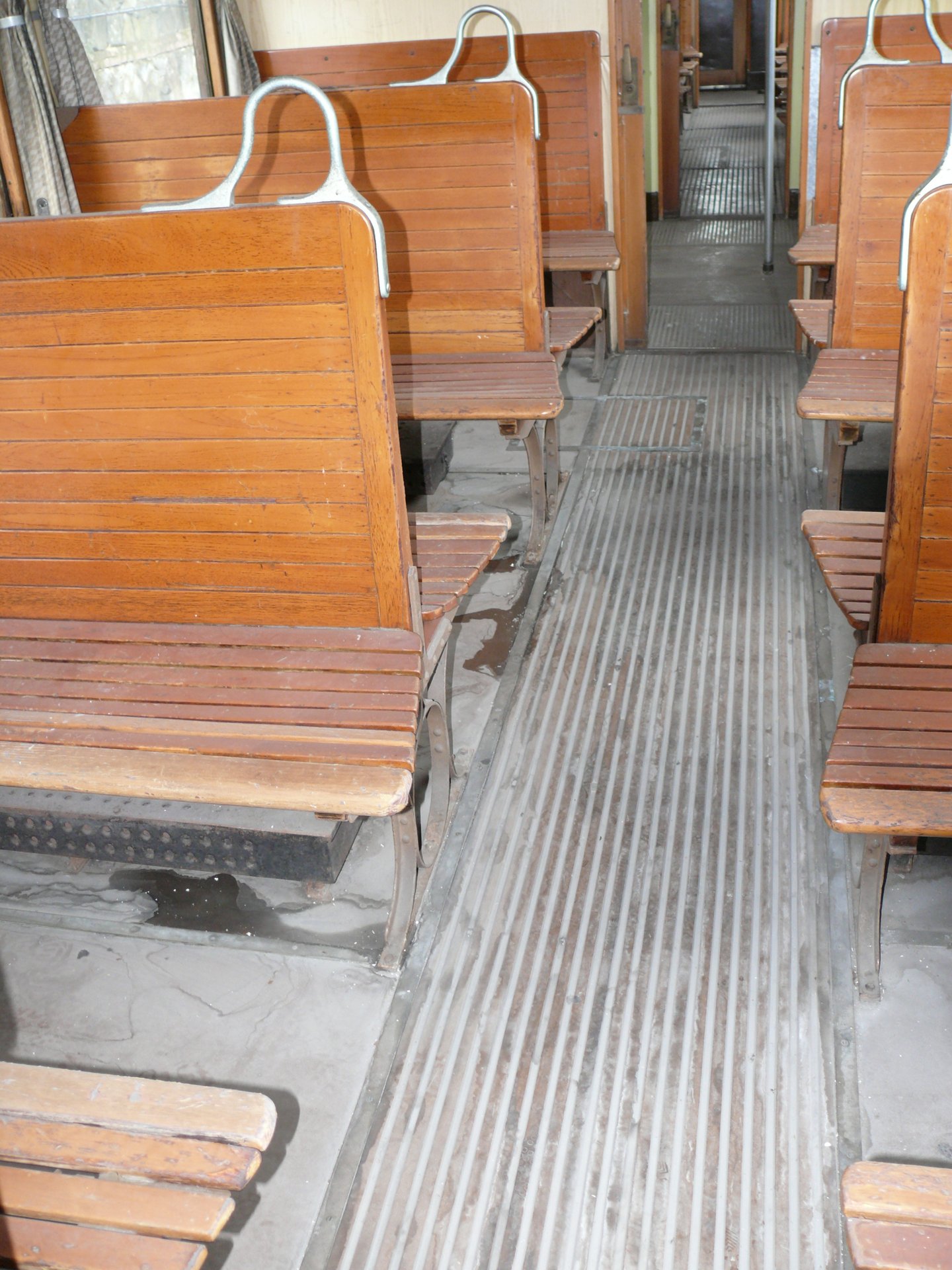Concurrent with the delivery of the first E 700s, between 1928 and 1932 a number of class E 800 control trailers were also supplied by the OEFT in Corsico and TIBB. Although structurally identical, they differed from the 700s by not having pantographs, traction motors and the rest of the equipment present only on electric railcars. Instead, the trailers had driving cabs and pneumatic and electrical ducts for the heating and for controlling the locomotive. Like the E 700s, the structure consisted of a robust frame and body of riveted sections and plates, with sliding access doors on the semi-central vestibules. The 800s were also mounted on Commonwealth-type bogies. With one or more trailers and an electric railcar, it was possible to form suburban trains capable of departing in the opposite direction without the need to turn at the end of the route, needing only enough time for the crew to change driving cab, and therefore offering a significant advantage over traditional steam services.
E-800

- Progettazione: 1927
- Costruzione: 1928-32
- Esercizio: 1928-2010
- Massa in servizio: t.34
- Rodiggio: B + B
- Costruttore: OM-TIBB Milano
- Lunghezza fuori tutto: 20.600 mm
- Larghezza: 2.900 mm
- Posti a sedere: 90
- Velocita massima: 80 Km/h
- Interperno carrelli: 13.900 mm
- Passo carrelli: 2.500 mm
- Ruote Ø: 1.000 mm
- Altezza imperiale: 3.800 mm
- Alimentazione (condutture): 3 kV CC
- Design date: 1927
- Build date: 1928-32
- Service date: 1928-2010
- Service mass: 34 tons
- Wheel arrangement: B + B
- Builder: OM-TIBB Milan
- Overall length: 20,600 mm
- Width: 2,900 mm
- Passenger capacity: 90
- Maximum speed: 80 Km/h
- Distance between bogie centres: 13,900 mm
- Bogie wheelbase: 2,500 mm
- Wheel Ø: 1,000 mm
- Roof height: 3,800 mm
- Voltage (power lines): 3 kV CC
For the sake of simplicity, the alphabetical index indicating class and category used for FNM classification has been omitted here, for both the 700s and the 800s. The actual markings varied: EACa 700 for a first and third class railcar. Or EACDrc 800 for a number of first class, third class and baggage compartment trailers. The control trailers (labelled rc) were passenger cars with ducts and equipment for driving located in the cab.
This meant that in addition to seating up to 90 passengers, the train could be moved in either direction via the driving cabs present. The 800s were also divided into three passenger compartments of first and third class, and in some cases a baggage car, separated by two vestibules for boarding and disembarking. Small driving cabs were located at the ends, as well as a connecting door to any adjacent vehicle. Like the 700s, the furniture consisted of wooden slat benches in third class or upholstered seating in first class.

